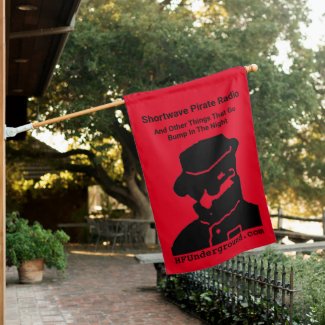Zeak, you are absolutely right about my seeming two signals being one and the same. This afternoon I was able to tune them both in simultaneously, and despite my earlier doubts they are indeed opposite sides of the same FSK coin, separated by 85 Hz this time.
The fact that "SE" and "F" are Morse mirror images of another was a very strong coincidence, so I wanted to keep an open mind. Most of my earlier objections to the idea can be explained away as aural illusions due to selective fading being HIGHLY selective at very low power levels on 22 meters. ( If you had heard F fade out last night and leave SE audible at a time when the two were less than 10 Hz apart, you'd likely have had doubts too!

)
My one objection that was not based on an aural illusion was the lack of a long dash denoting the space frequency, which means the operator must intentionally cut the carrier between idents, and does it with such deliberate timing that the mirrored/inverted versions both represent perfectly formed Morse letters. That in turn raises a couple of questions, though:
1. I wonder why someone would not leave the "space" intact, or at least on for a longer duty cycle, to give the listener a chance to mentally sync up and/or be better able to distinguish whether high or low is intended to be the "mark".
2. How did you make the determination that "mark" is intended to be low?
Thanks again for your reply.



